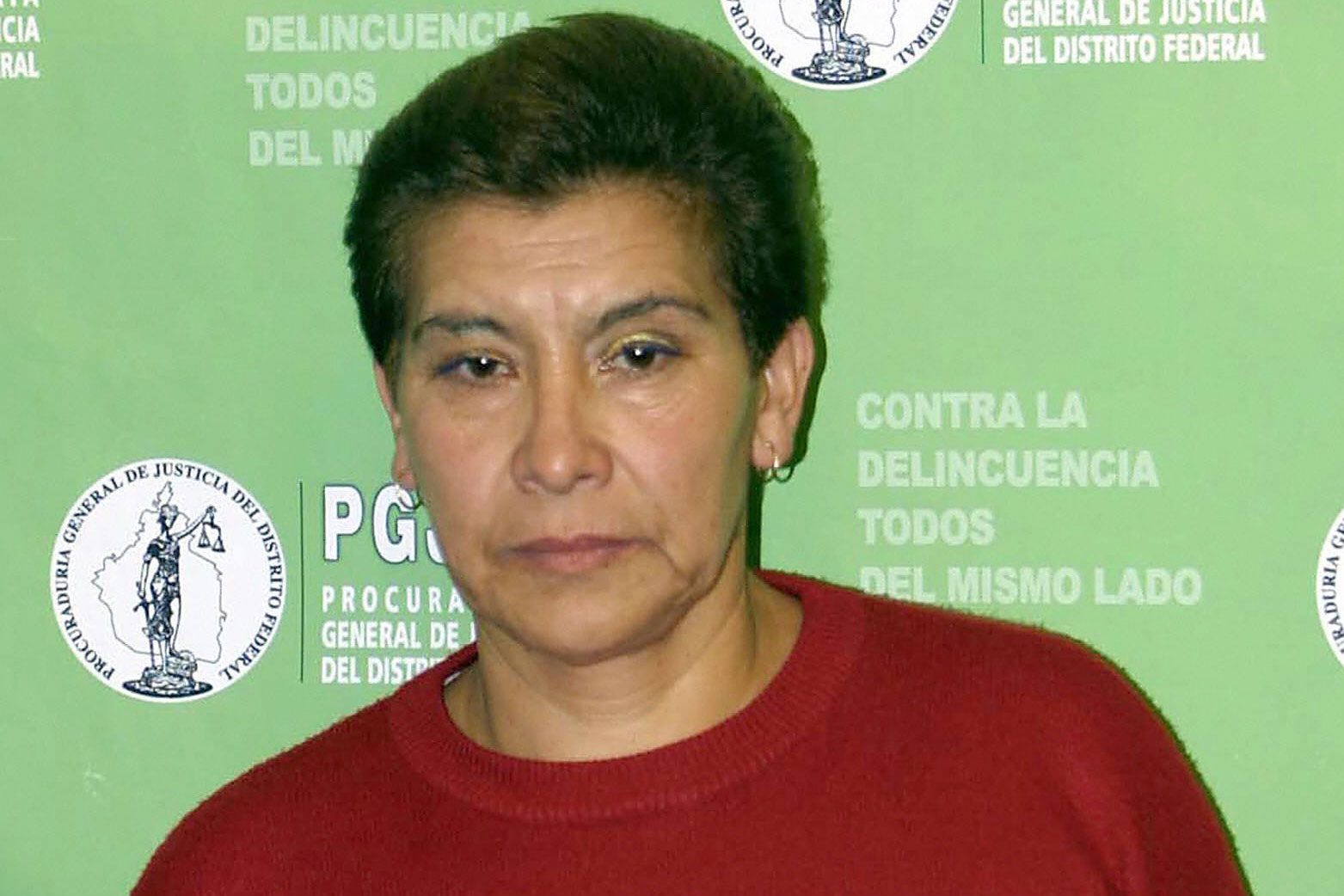
Who was Juana Barraza? Juana Barraza, infamously known as "La Mataviejitas" or "The Old Lady Killer," was a Mexican professional wrestler turned serial killer. Her crimes shocked Mexico City between the late 1990s and early 2000s. What drove her to commit such heinous acts? Barraza's troubled childhood, marked by abuse and neglect, played a significant role in shaping her violent tendencies. How did she evade capture for so long? Her ability to blend in and gain the trust of elderly women, coupled with police missteps, allowed her to continue her spree undetected. What was her ultimate fate? In 2008, she received a 759-year prison sentence, ensuring she would never harm again. Dive into these 37 facts to learn more about her chilling story.
Key Takeaways:
- Juana Barraza, also known as "La Mataviejitas," was a notorious Mexican serial killer who targeted elderly women. Her tragic childhood and psychopathic tendencies led to a reign of terror that shocked the world.
- Despite her infamy, Juana Barraza's case prompted societal changes, including increased security measures for the elderly and a deeper understanding of the impact of childhood trauma on adult behavior. Her story continues to intrigue and educate.
Early Life and Background
Juana Barraza, also known as "La Mataviejitas," has a life story that is both fascinating and chilling. Her early years set the stage for her later actions.
- Born on December 27, 1957, in Hidalgo, Mexico.
- Her mother was an alcoholic who traded her for three beers to a man who abused her.
- Barraza had four children, one of whom died from injuries sustained during a mugging.
- She worked as a professional wrestler under the ring name "La Dama del Silencio" (The Lady of Silence).
Criminal Activities
Barraza's criminal activities are what brought her infamy. Her actions shocked Mexico and the world.
- She is believed to have started her killing spree in the late 1990s.
- Barraza targeted elderly women, often posing as a government official to gain their trust.
- She would strangle her victims with items like stethoscopes, phone cables, or her bare hands.
- Police initially thought the murders were the work of a man, due to the physical strength required.
Capture and Trial
The capture and trial of Juana Barraza were highly publicized events. Her arrest brought an end to a reign of terror.
- Barraza was arrested on January 25, 2006, after fleeing the scene of her last murder.
- She was caught with a stethoscope and pension forms, linking her to the crime.
- During her trial, she confessed to four murders but was suspected of up to 49.
- Barraza was sentenced to 759 years in prison on March 31, 2008.
Psychological Profile
Understanding Barraza's psychological profile helps explain her actions, though it doesn't excuse them.
- She was diagnosed with psychopathy and antisocial personality disorder.
- Experts believe her hatred for her mother fueled her rage against elderly women.
- Barraza showed no remorse during her trial, maintaining a cold and detached demeanor.
Impact on Society
The impact of Barraza's crimes on Mexican society was profound. Her actions led to significant changes in law enforcement and public awareness.
- Her case led to increased security measures for elderly citizens in Mexico City.
- The police faced criticism for their initial handling of the investigation, leading to reforms.
- Barraza's story has been the subject of numerous documentaries and books.
- Her case highlighted the need for better mental health support and social services in Mexico.
Media and Pop Culture
Juana Barraza's story has permeated media and pop culture, making her a notorious figure.
- She has been featured in several true crime documentaries, including "La Mataviejitas."
- Barraza's life inspired episodes of crime shows like "Criminal Minds" and "Law & Order."
- Her wrestling persona, "La Dama del Silencio," has been referenced in various wrestling forums and articles.
- Barraza's case has been discussed in numerous podcasts dedicated to true crime.
Personal Life in Prison
Even behind bars, Barraza's life continues to intrigue many. Her behavior and activities in prison are closely watched.
- Barraza has taken up knitting and sewing while in prison.
- She has reportedly formed close relationships with other inmates.
- Barraza has given several interviews, maintaining her innocence in some of the murders.
- She has expressed a desire to be remembered for her wrestling career rather than her crimes.
Public Perception
Public perception of Juana Barraza varies, with some seeing her as a monster and others as a tragic figure.
- Many view her as one of the most notorious serial killers in Mexican history.
- Some sympathize with her due to her traumatic childhood and abusive relationships.
- Barraza's case has sparked debates about nature versus nurture in criminal behavior.
- She remains a subject of fascination and horror in Mexican popular culture.
Legacy
The legacy of Juana Barraza is a complex one, marked by both her crimes and the societal changes they prompted.
- Her case led to the creation of support groups for the elderly in Mexico City.
- Barraza's story is used in criminology courses to study female serial killers.
- Her life has been the subject of academic papers and psychological studies.
- Barraza's case has influenced Mexican law enforcement's approach to serial crimes.
- She remains a cautionary tale about the impact of childhood trauma on adult behavior.
- Barraza's story continues to be a topic of discussion and analysis in true crime communities.
Final Thoughts on Juana Barraza
Juana Barraza's story is both chilling and fascinating. Known as the "Mataviejitas," she terrorized Mexico City, targeting elderly women. Her background as a professional wrestler added a bizarre twist to her criminal activities. Barraza's troubled childhood, marked by abuse and neglect, likely played a role in shaping her violent tendencies. Despite her heinous crimes, she managed to evade capture for years, showcasing her cunning nature.
Her arrest in 2006 brought an end to her reign of terror, but her story continues to captivate true crime enthusiasts. Barraza's case serves as a grim reminder of how personal trauma can manifest in destructive ways. Understanding her life and crimes provides valuable insights into the complexities of human behavior. As we reflect on her dark legacy, it's crucial to remember the victims and the impact on their families.
Frequently Asked Questions
Was this page helpful?
Our commitment to delivering trustworthy and engaging content is at the heart of what we do. Each fact on our site is contributed by real users like you, bringing a wealth of diverse insights and information. To ensure the highest standards of accuracy and reliability, our dedicated editors meticulously review each submission. This process guarantees that the facts we share are not only fascinating but also credible. Trust in our commitment to quality and authenticity as you explore and learn with us.


